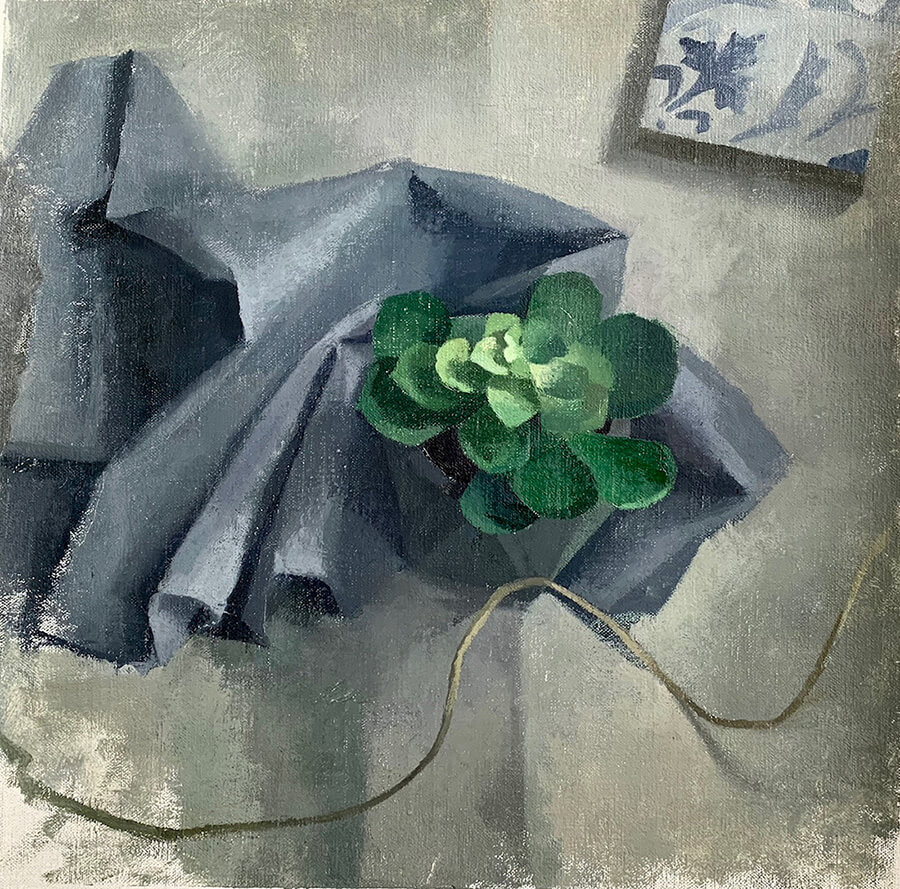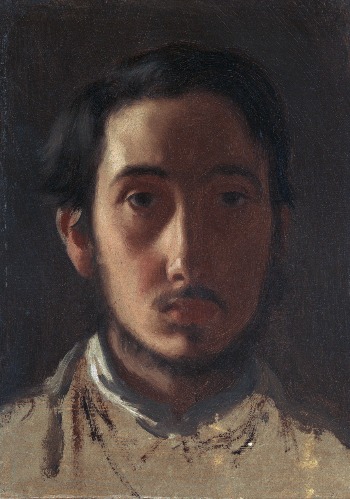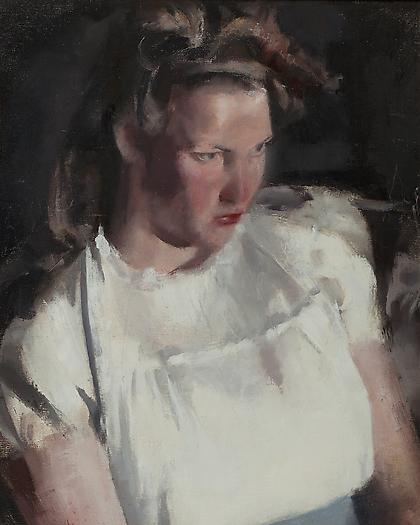Below you will find the top essential things to keep in mind as you begin alla prima painting! If alla prima painting is new for you, this guide will help you learn what alla prima (and premier coup) is and give you actionable tips to get started. If you do have some experience, then look at these as great reminders!
But first off let’s quickly touch on, what alla prima (and premier coup) paintings are…
What is alla prima painting?
Alla Prima and premier coup painting are Italian and French words meaning ‘first attempt’. A word used to describe a painting that is meant to be started and completed in one session only.

Doing one session paintings is an incredible way to learn how to paint. You learn what you are doing incorrectly right away.
So, before wasting any more time on the same painting on which you are repeating the same mistakes, you instead start a new one for your next painting session with the new found knowledge in mind. Over time, you are able to build your skills in a more strategic way.
Let’s get started with learning how to work quickly while painting an alla prima!
Painting (wet on wet) quickly
The alla prima painting technique is often known as the wet on wet technique. Essentially, this means that you work with wet paint on top of other wet paint. This can be done with a variety of mediums including watercolors, oils, and even acrylics. However oils are by far the easiest to achieve this wet on wet painting technique with, as oil paints take longer to dry.

The main thing to keep in mind when using this technique is that you need to work quickly. The reason for this is because if you let the bottom layer of paint dry before adding more on top, then you will have a difficult time getting the two layers to adhere to each other.
How to simplify alla prima painting
One common mistake that people make when learning how to do alla prima paintings is that they try to add too much detail too soon. It is important to remember that alla prima paintings are meant to be completed in one sitting. This means that you should not get too bogged down in the details of the painting. Instead, focus on the overall composition and color scheme. You can always add more detail later on if you need to.
It may sound easy or simple to simplify something, but it most certainly is not!
Your English teacher probably told you that it is far better to be able to write clearly with as few words as possible than be unnecessarily wordy. So is the same case with painting. It is far better to be able to simply state what you are painting than add in a lot of detail that just detracts.
Focus on essential elements
To simplify basically means to go after the essential elements of what you are painting. Essential elements would be value (light and dark), color, temperature, and geometry. Do not allow yourself to be distracted by small miniscule details. Details can sometimes be SO tantalizing, but don’t go after the bait. There are also some ‘simplifying tools’ that can help us see what we’re painting in a different way – these can be incredibly helpful!

In the above self portrait by Edgar Degas you can see how there is a wonderful simplicity about the painting. There is no fussy and unnecessary attention paid to details. Instead, there is absolute clarity with what is dark, light and mid tone. Looking at paintings with a strong value structure can help guide you in how to simplify your painting.
Squint your eyes
Squinting your eyes is one of the best visual ‘tools’ in simplifying what you see. When you squint your eyes you will more easily be able to see what you are painting in a simplified way – especially value. Continually squint your eyes throughout your alla prima painting session.
Try to see what you about painting in an abstract way. By that I mean to look at what you are painting in terms of light and dark, color and shapes. When you change your mindset to see the world like a painter, your ability to simplify exponentially increases.
Focus on value
Value is one of the most important elements in painting. If the value in a painting is wrong but the color entirely off, the painting will still work. However, if the colors are wonderful but the value is off, then the painting will not work.

So, focusing on value first is key. In alla prima painting you have a limited frame of time in which to work and thus want to be able to focus on the essentials. Making value a priority while you work will increase your chances of making a successful painting.
A helpful trick for seeing the value of what you are painting more clearly is to use a red transparent plastic sheet. The colored sheet makes everything monochrome so it is easier to pinpoint what and where the groups of ‘darks’ and ‘lights’ are without getting distracted by color. Another tip is to use your turned off cellphone screen as a black mirror. Looking at the reflection of what you are painting on a black screen does a similar thing as the aforementioned red transparent sheet.
What’s the ‘big picture’ of your alla prima?
It is important to keep the ‘big picture’ in mind throughout your alla prima session. Make sure that you are capturing the feeling of light in your piece. See that the dark values are dark enough and that the big shapes of light are there. Do not get overly involved with details – these are not important especially when doing an alla prima painting. Focus in on the important big picture elements.

One of the easiest ways to make sure you are focusing on the big picture elements of your piece is to take frequent steps back from your painting and view it as a whole. If you only view your work up close you will not be able to correct yourself and is an easy way to fall into the hole of focusing too much on unnecessary detail.
Have plenty of paint ready

Try not to be stingy about the amount of paint you avail yourself to. Having a healthy amount of paint on your palette is important in alla prima and painting wet on wet! If you just mix tiny mounds of paint you will be struggling most of your session to continually remix more colors.
You already only have a limited amount of time in an alla prima painting session. You do not want to waste it on struggles related to thin paint or needing to continually remix colors. Just mix and use a lot of paint. Not only will you be happy that you did so, but one tends to learn quite a bit more when using a decent amount of paint.
I understand that paint can be expensive, but you will be wasting it even more if you only paint thinly. It will hold you back!
Paint with a sense of urgency
Painting with a sense of urgency sometimes comes naturally when for example doing a painting of a sunset or sunrise. In these situations the light changes so quickly one does not have the choice but to work quickly.

I find that I sometimes do my best work when in a situation where urgency is required. It makes you focus entirely on what you are painting without distraction.
Whether you are working on something where your motif is ever changing (like a sunrise) or a still life that remains constant, the fact of the matter is that alla prima painting is a one session painting. The time of a session could vary from 30 minutes to 4 hours depending on what you are painting.
So, whatever your motif is, it is important to work with a sense of urgency as you only have your one session of time. However, do not hurry as you paint! Just try to focus and pace yourself as you work.
Scrape, scrape and scrape!
I LOVE to scrape paintings… This might sound counter intuitive – why would you scrape away what you worked so hard to put down? Let me explain.

But first – what does scraping even mean? Simply put, it is when a palette knife is used to ‘scrape’ your painting – typically meant to take only a superficial layer off.
Benefits of scraping your alla prima painting
Scraping has innumerable benefits. When you scrape a part of your painting it takes away the unnecessary detail and lets you work afresh with the essential elements in place. So, what a scraped painting leaves behind is the ‘big picture’ you want to go after. In addition, it can help you to unify your painting more.
I almost always do some degree of scraping in a painting. It might just be a particular area or sometimes even the entire painting. It might be scary to try at first – but just try it!
Loosen up your alla prima painting
Try not to paint too tightly when doing an alla prima painting. Especially if working with wet on wet technique. If you work tightly you for one will probably run out of time to complete your painting before your session time is up. More importantly however, an alla prima work is meant to have some gesture and life to it.
Loosening up however does not mean to not be precise. It is important to be as precise as you possibly can. You can be dead on with value, color and geometry (to a certain degree) while working ‘loosely’. Working more freely means to free yourself up more and trying to work broadly while focus on the ‘big picture’ of the piece. Try to relax a little bit without loosing a sense of urgency!
What do you enjoy or struggle with when doing these alla prima / premier coup paintings? Love to hear from you in the comments below!
If you haven’t already – Grab my FREE Color Mixing Guide for help with color mixing techniques in your painting!






10 thoughts on “How to Paint Alla Prima (Painting Tips and Techniques)”
Do you teach any zoom art classes on a regular basis
I have open enrollment periods for different painting courses throughout the year. Sometimes they contain live zoom classes in addition to the course material. I send out e-mail notices when courses open up for enrollment!
Hello Elisabeth
This could be good for me to do small paintings to help with my colour mixing too.
Thanks again for all your help.
Kind regards.
Hi Mike, Yes! Doing small paintings works wonderfully for doing color studies and working on color mixing. It is something I incorporate into my own painting practice all the time.
אליזבת יקרה
מבהירה היטב את השיטה,,תודה רבה להדרכה מועילה מאוד
אם יש לך הדרכה בצבעי מים?
בהערכה רבה ליוזמה
תודה
רותי כהן
שלום רותי היקרה,
אני כל כך שמחה שנהנית מהשיעור הזה 🙂
כן! יש לי כמה מדריכים בצבעי מים – אתה יכול למצוא אותם כאן: Watercolor Tutorials
Really good advice here. I have had formal art studies, but this is one technique I don’t remember being touched upon. I know that when I painted nature scenes, I employed it to some degree, as elements like clouds, skies, and tree foliage, can be blocked in rather quickly.
Hi Jennifer, So glad to hear that you found some new helpful information in this article. Thank you for sharing that 🙂
Elizabeth, buenas noches, feliz con todos los artículos que publica y que nos ayuda a los aficionados a la pintura, Dios la bendiga por tanta generosidad, un abrazo desde Ocaña Colombia
Pingback: Vermeer's Painting Techniques - Art Studio Life